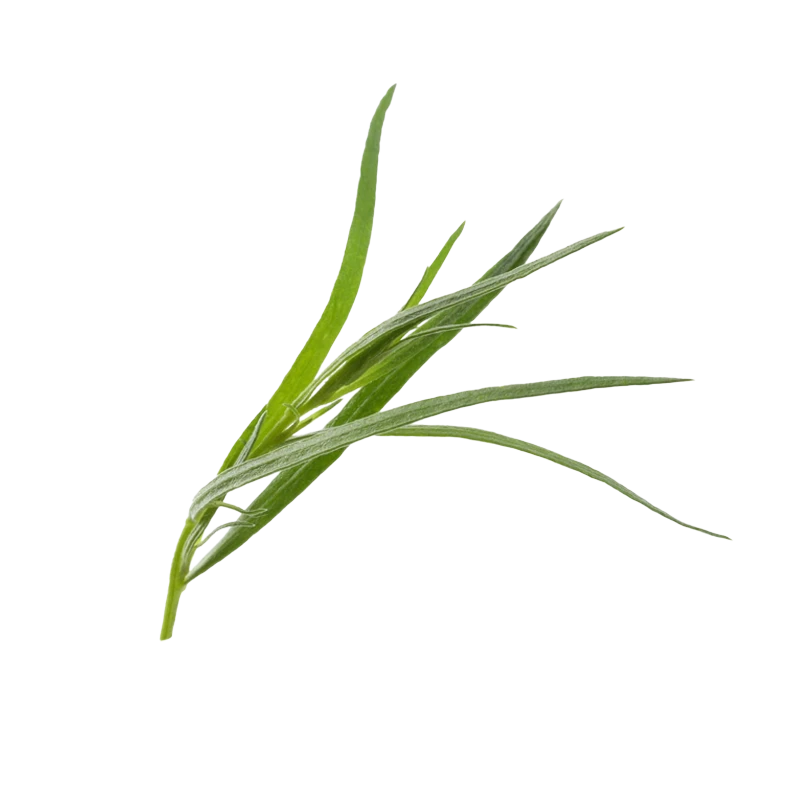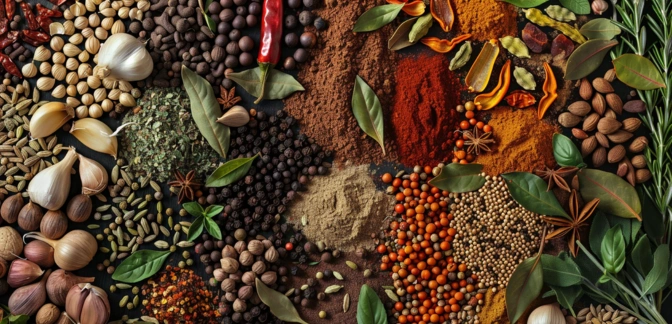Fresh Tarragon — Nutrients, Health Benefits, And Shopping Tips

Written by Listonic Team
Last update on September 3, 2024
Nutrition facts
Nutrition facts
Amount per 100 g
Calories
🔥 295 kcal
| Nutrition per: 100 g | Value | % Daily Value* |
|---|---|---|
| Carbs | 50 g | 18.18% |
| Fiber | 7 g | 25% |
| Sugars | 0 g | - |
| Glycemic Index | 5 | - |
| Protein | 23 g | 46% |
| Sodium | 62 mg | 2.7% |
| Total Fat | 7 g | 8.97% |
*The % of Daily Value (DV) tells you how much a nutrient in a serving of food contributes to a daily diet. 2,000 calories a day is used for general nutrition advice.
23 g
💪 High Protein Content
7 g
🥔 Good Fiber Content
Did you know?
Health benefits
- Rich in antioxidants, which help protect the body from free radicals and reduce inflammation.
- Supports digestive health by stimulating the production of digestive enzymes and reducing symptoms of indigestion and bloating.
- Contains essential vitamins and minerals such as Vitamin A, Vitamin C, and manganese, which support overall health and well-being.
Health risks
- Potential for allergic reactions in some individuals, particularly those allergic to plants in the Asteraceae family, causing symptoms like itching, swelling, or difficulty breathing.
- Digestive discomfort such as stomach upset or diarrhea when consumed in large quantities, particularly due to its strong flavor.
- Potential interactions with medications particularly blood thinners, as tarragon may have mild anticoagulant effects.
- Risk of contamination with harmful bacteria or pesticides if not properly washed or sourced from a reputable supplier.
How to choose fresh tarragon
Fresh tarragon should boast bright green leaves with no signs of wilting. Its flavor is slightly anise-like, with a sweet, subtle undertone. Feel the stems; they should be pliable but snappy when bent.
Do not buy tarragon if it appears limp or has a faded color. High-quality tarragon should be aromatic and enhance dishes with its unique flavor.

How to store fresh tarragon
Fresh tarragon should be refrigerated to retain its delicate flavor. Store it in a damp paper towel inside a plastic bag. Properly stored, fresh tarragon can last up to a week.
Placing tarragon near strong odors can result in flavor absorption. It is advisable to wash tarragon only before use. Keeping the bag slightly open allows for optimal freshness.
✅ Extra Tip
How long does it last?
Fresh tarragon can last for 1-2 weeks in the refrigerator when stored in a plastic bag with a paper towel to absorb excess moisture. For longer storage, tarragon can be dried and kept for up to 6 months in an airtight container.
What to do with leftovers?
Leftover fresh tarragon can be used in a variety of culinary and non-culinary ways. In the kitchen, tarragon adds a distinctive, slightly sweet and anise-like flavor to dishes like chicken, fish, salads, and sauces. It’s a key ingredient in classic French dishes like béarnaise sauce and can be used to infuse vinegars or oils for salad dressings.
Beyond cooking, fresh tarragon has some interesting uses. It can be brewed into a tea, traditionally used to help aid digestion and promote sleep. Tarragon’s essential oils can be extracted and used in aromatherapy for their calming effects. Fresh tarragon can also be used in homemade herbal baths or added to potpourri for a pleasant aroma. Additionally, tarragon has mild antiseptic properties and can be applied to insect bites or minor cuts to help soothe the skin, though this is more of a traditional remedy.
👨⚕️️ Medical disclaimer
Discover products from other categories
Listonic Team
Fact-checked
Our editorial team checked this article to make sure it was accurate at the time of publishing it.
Get the top-rated shopping list app on your phone!







